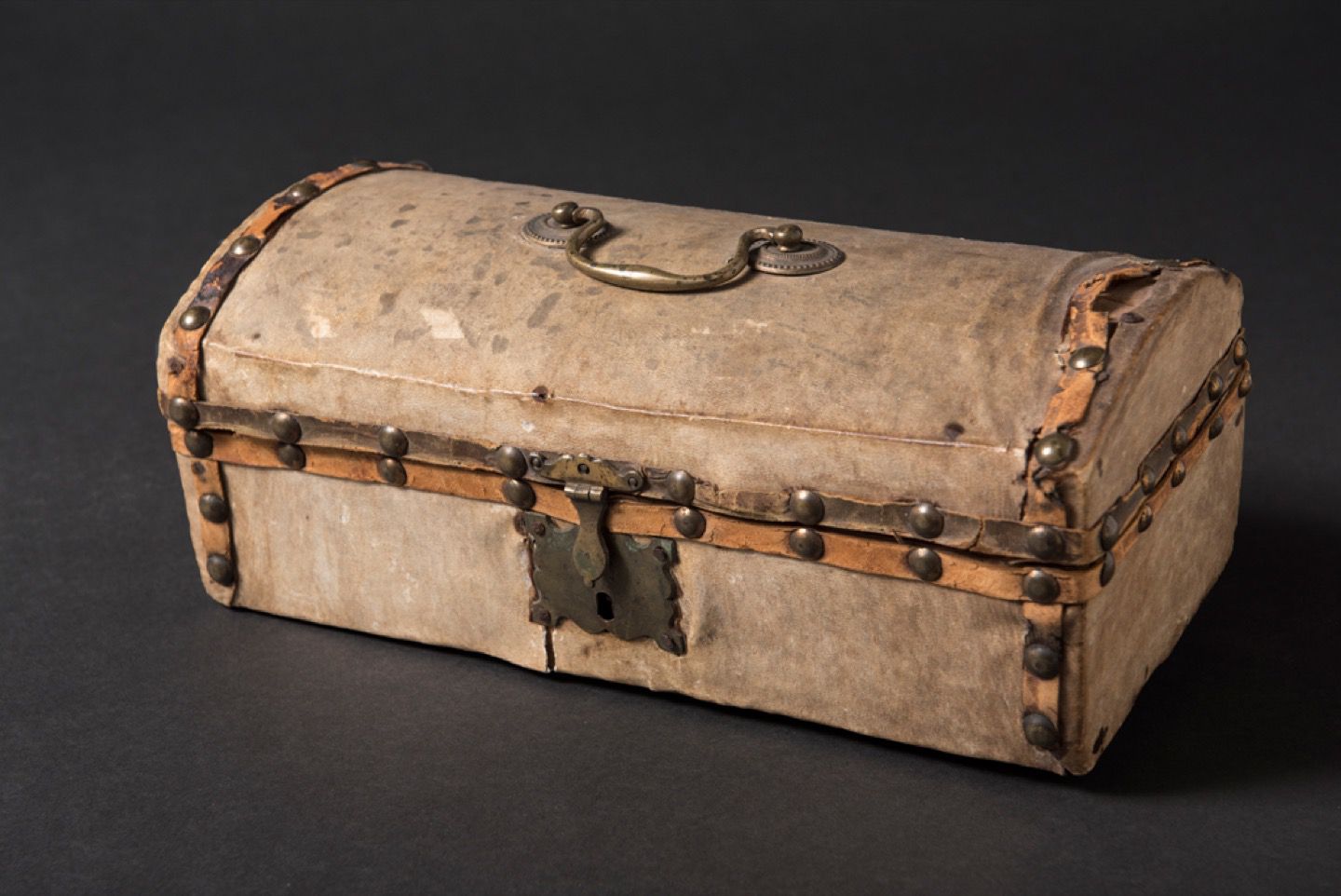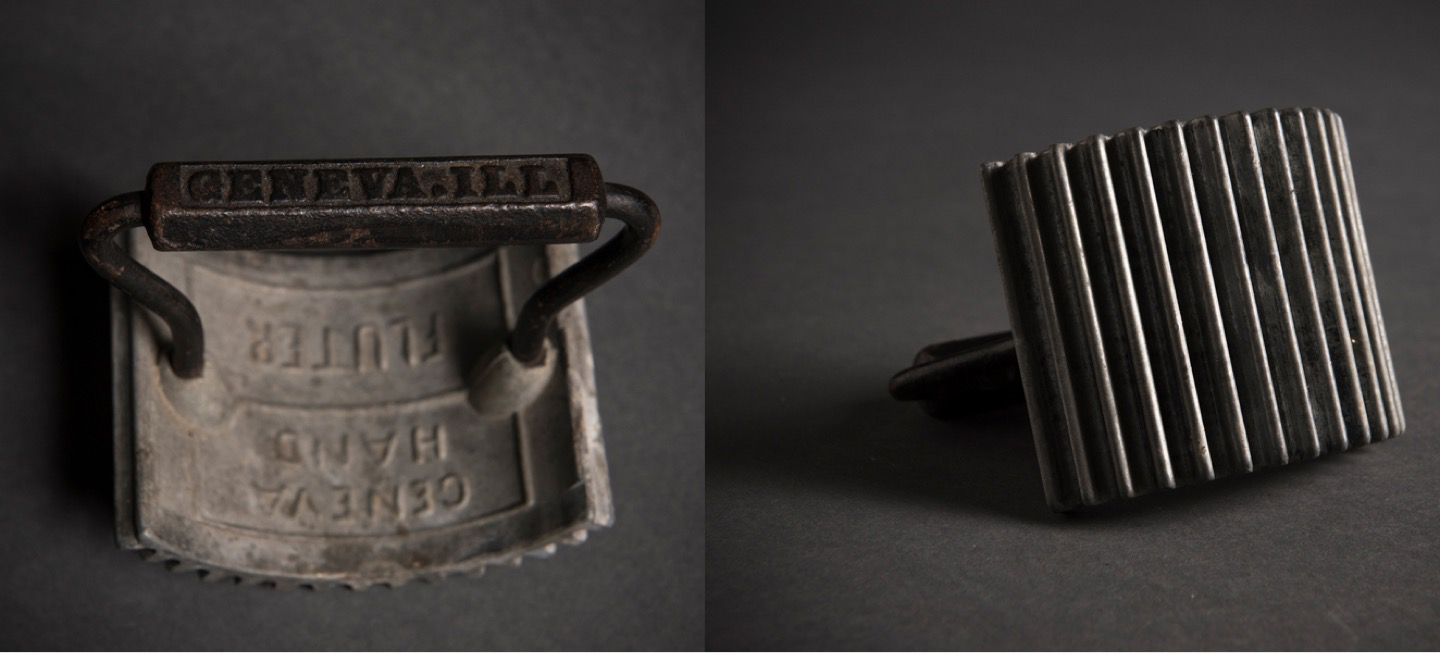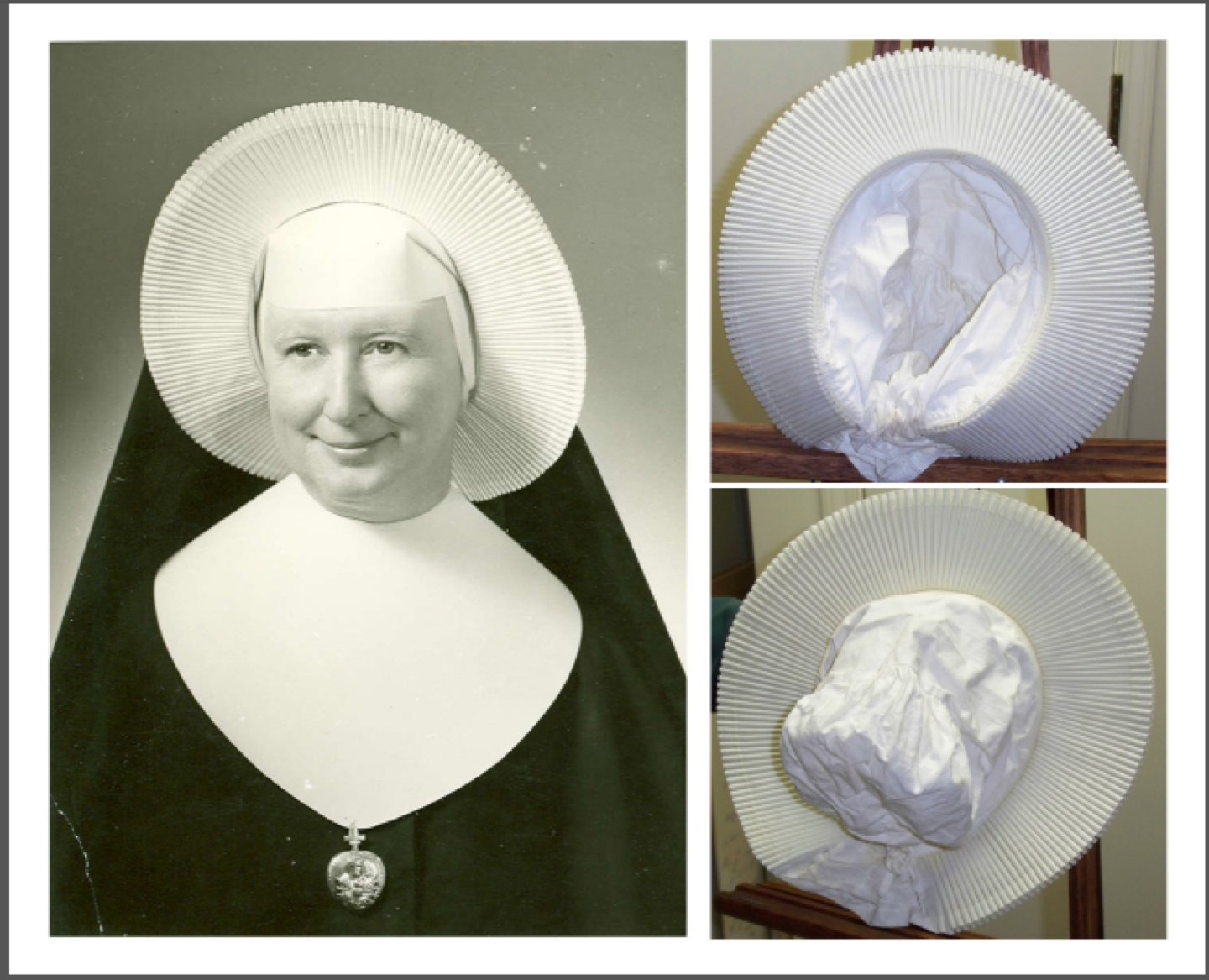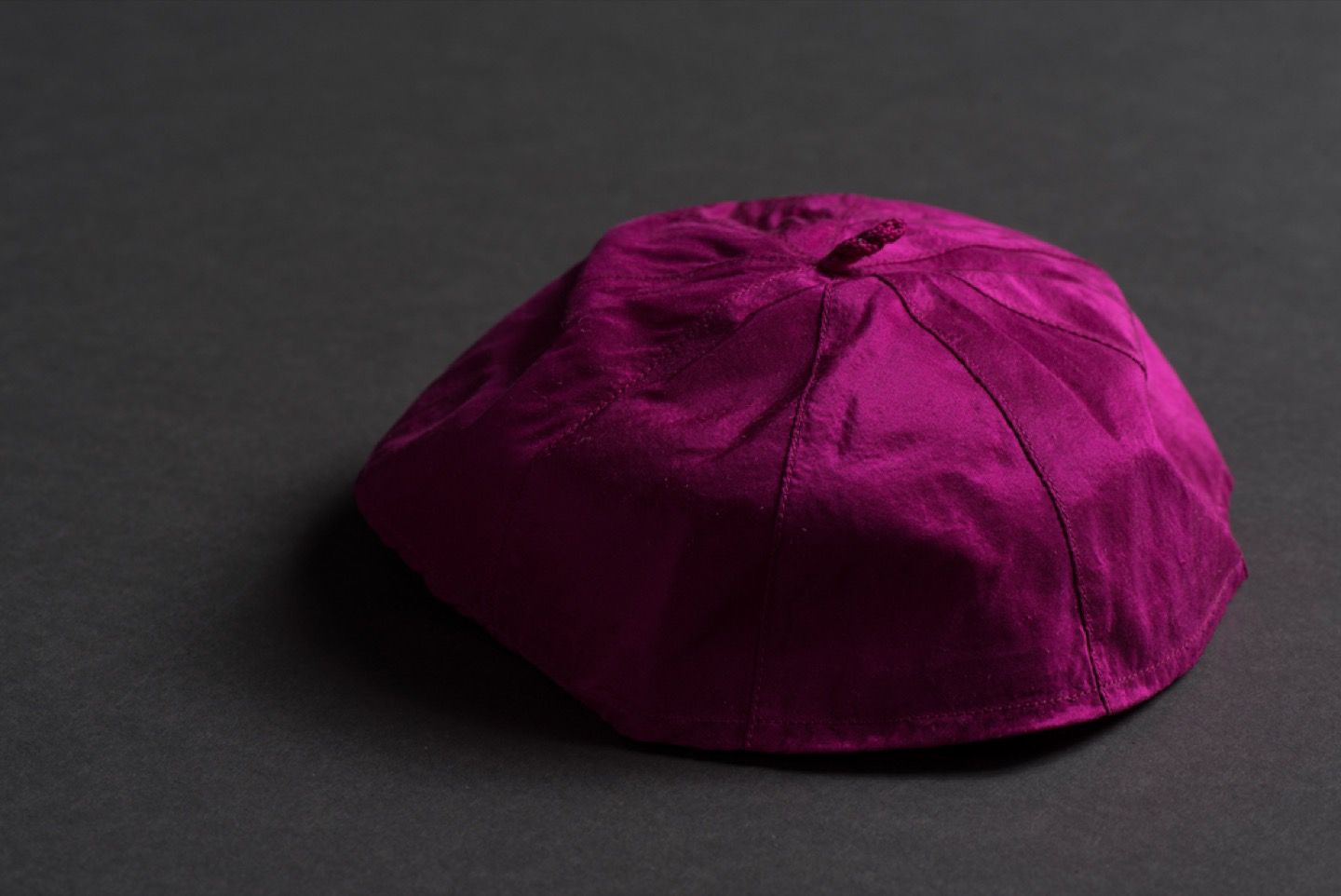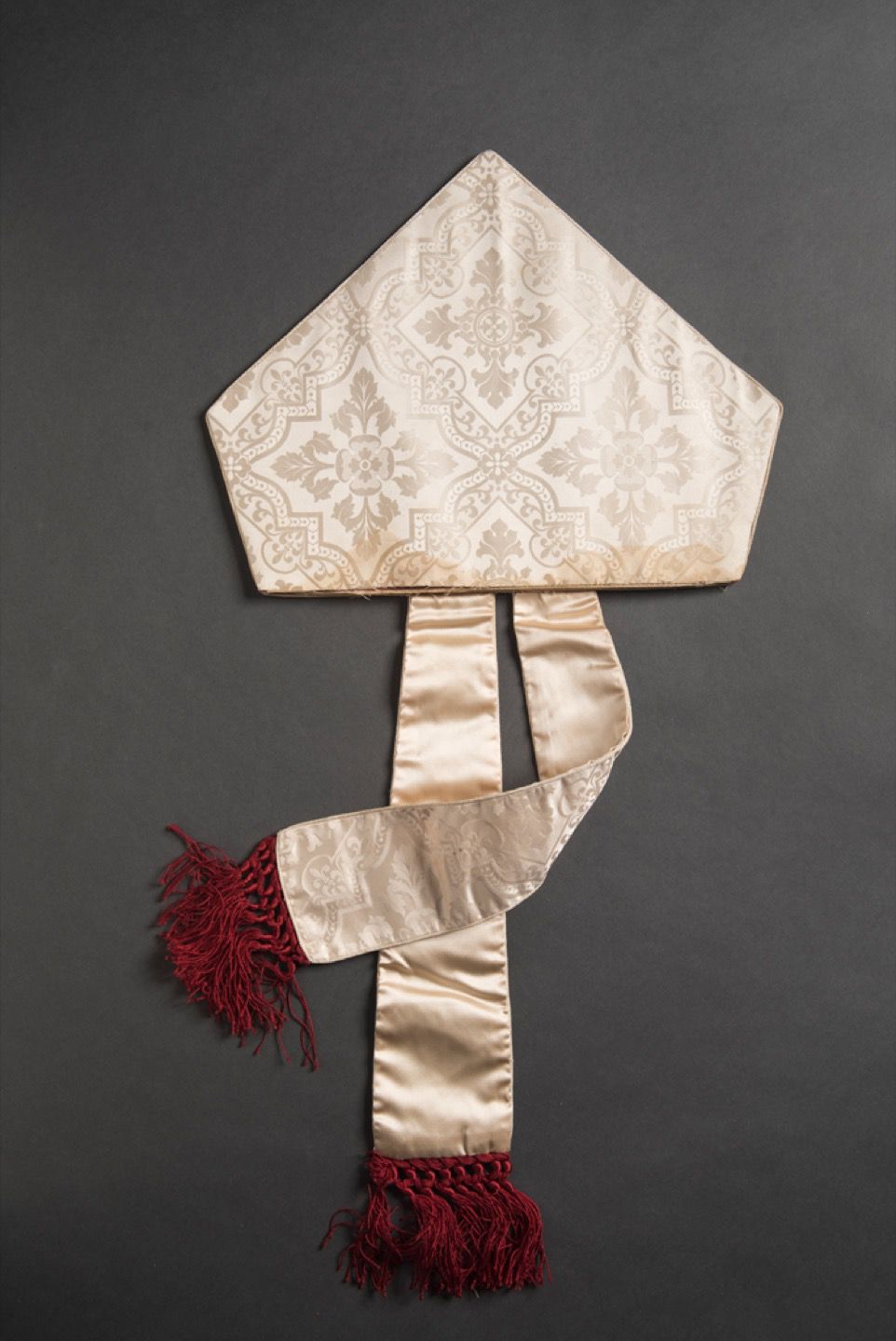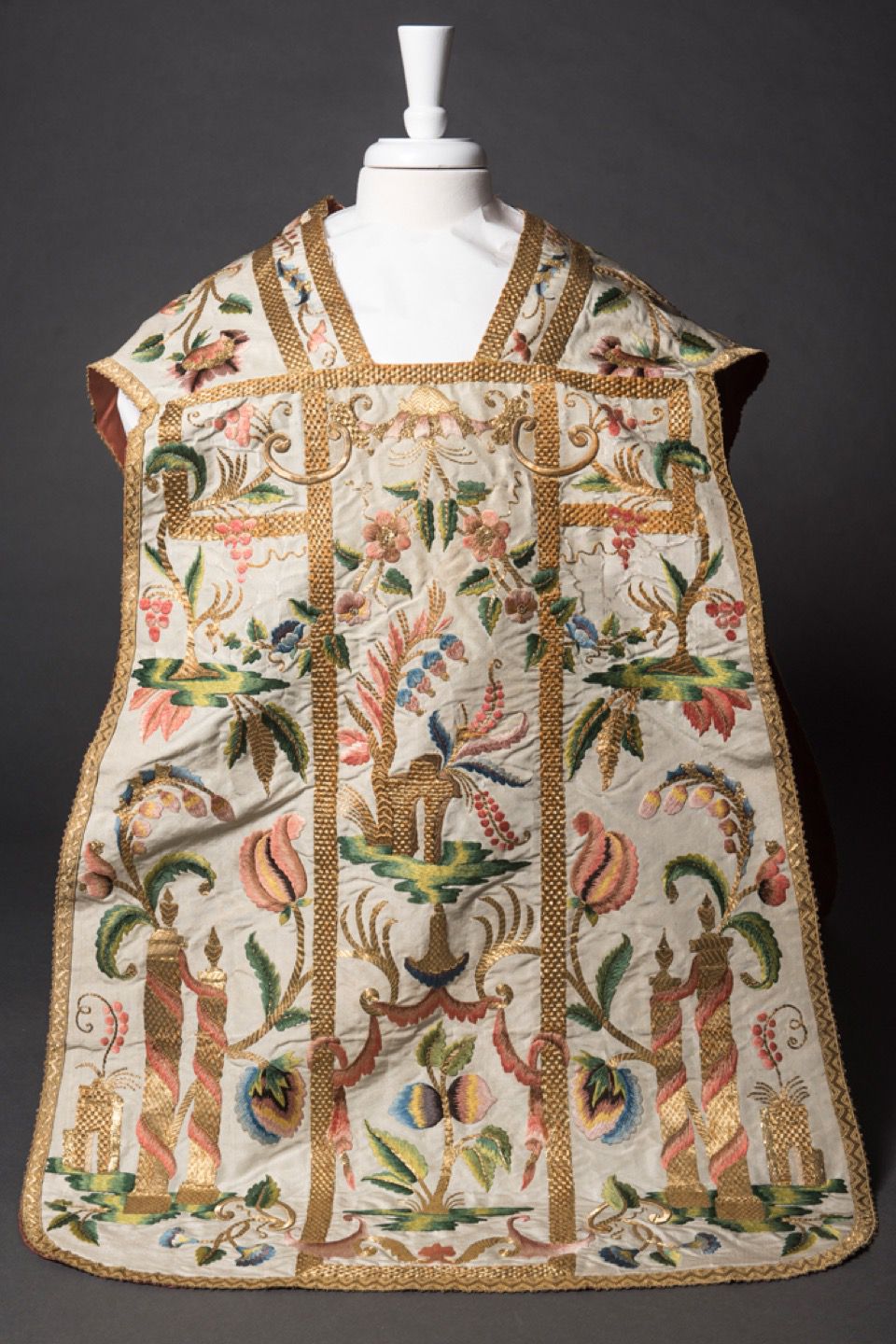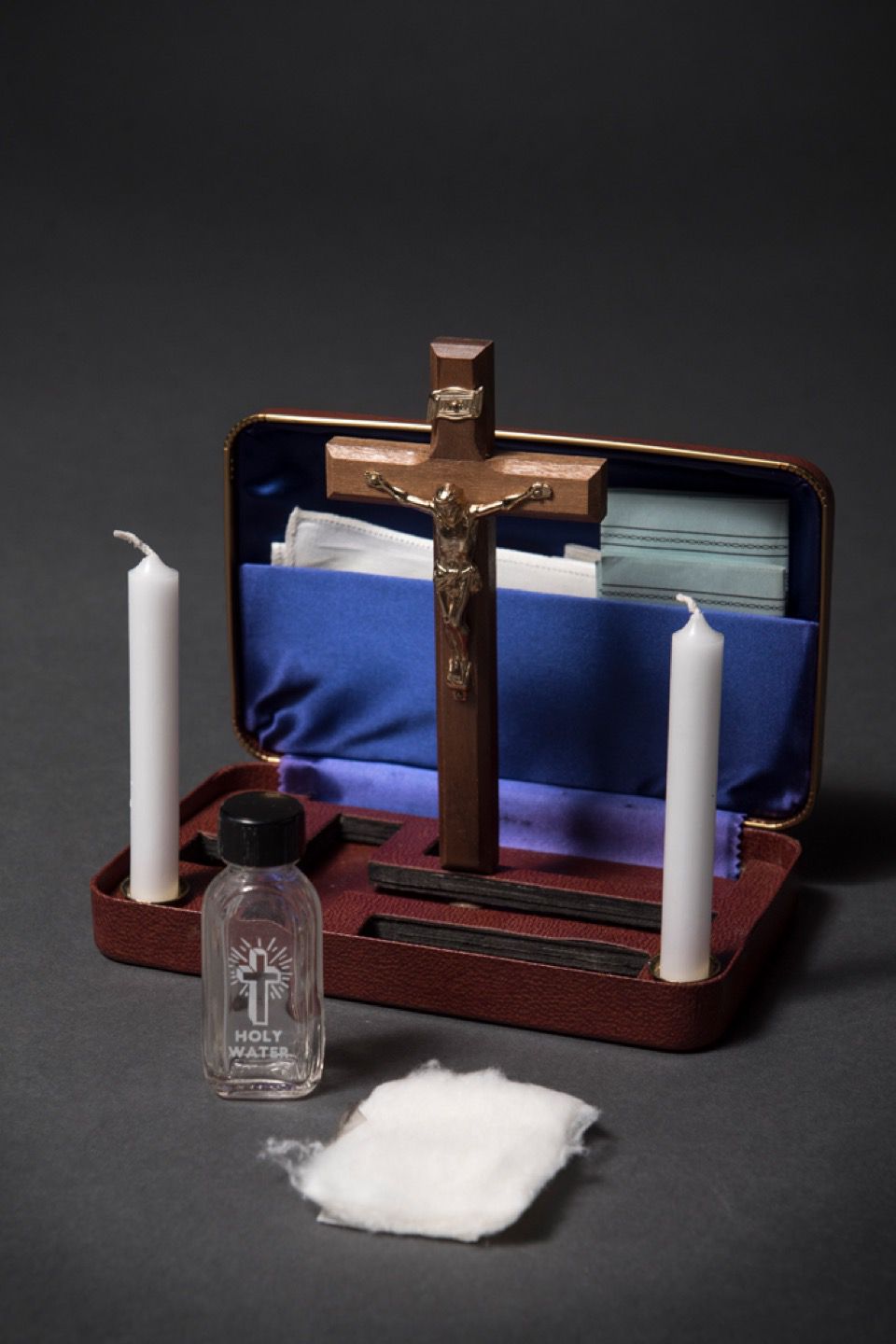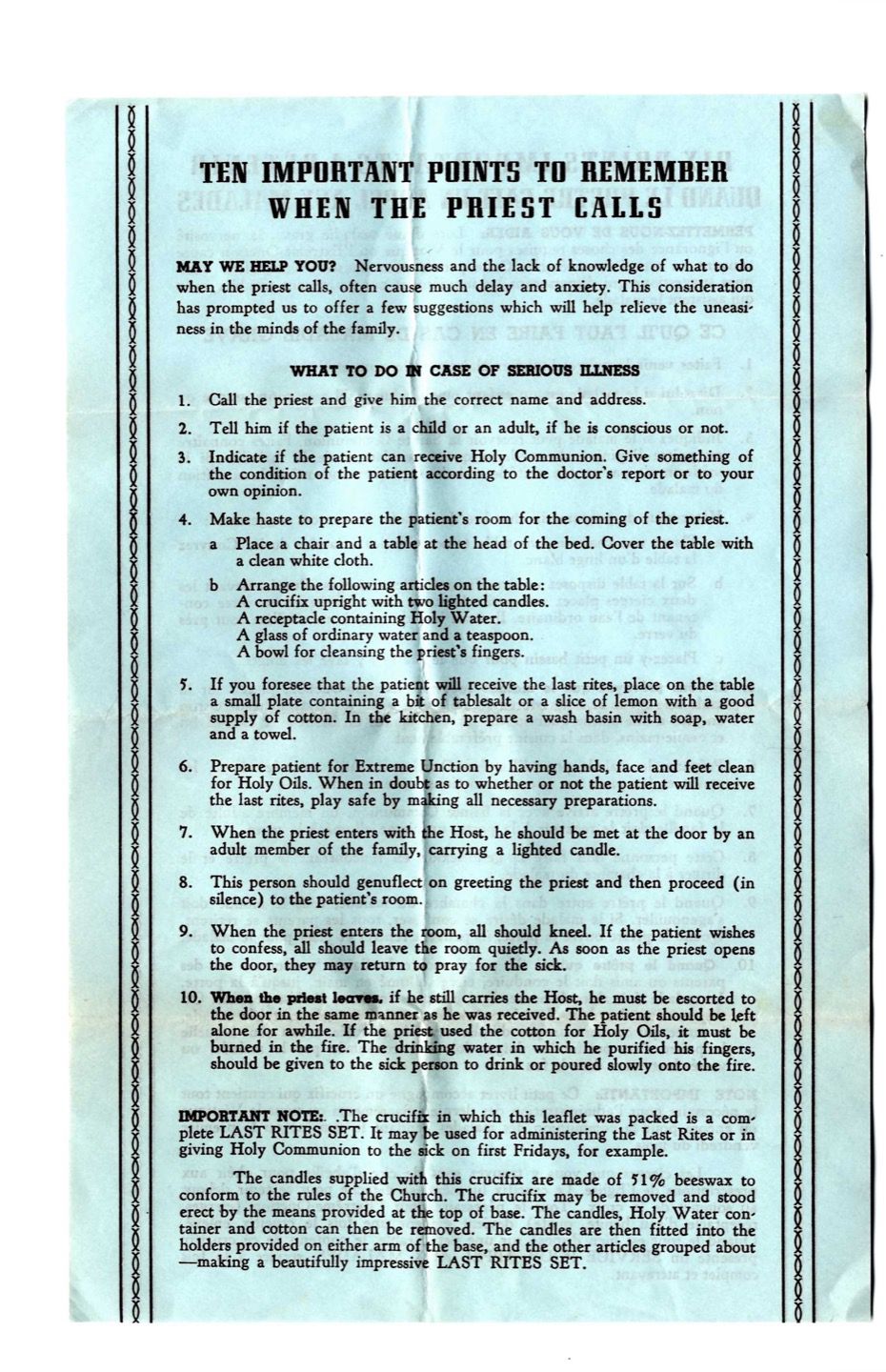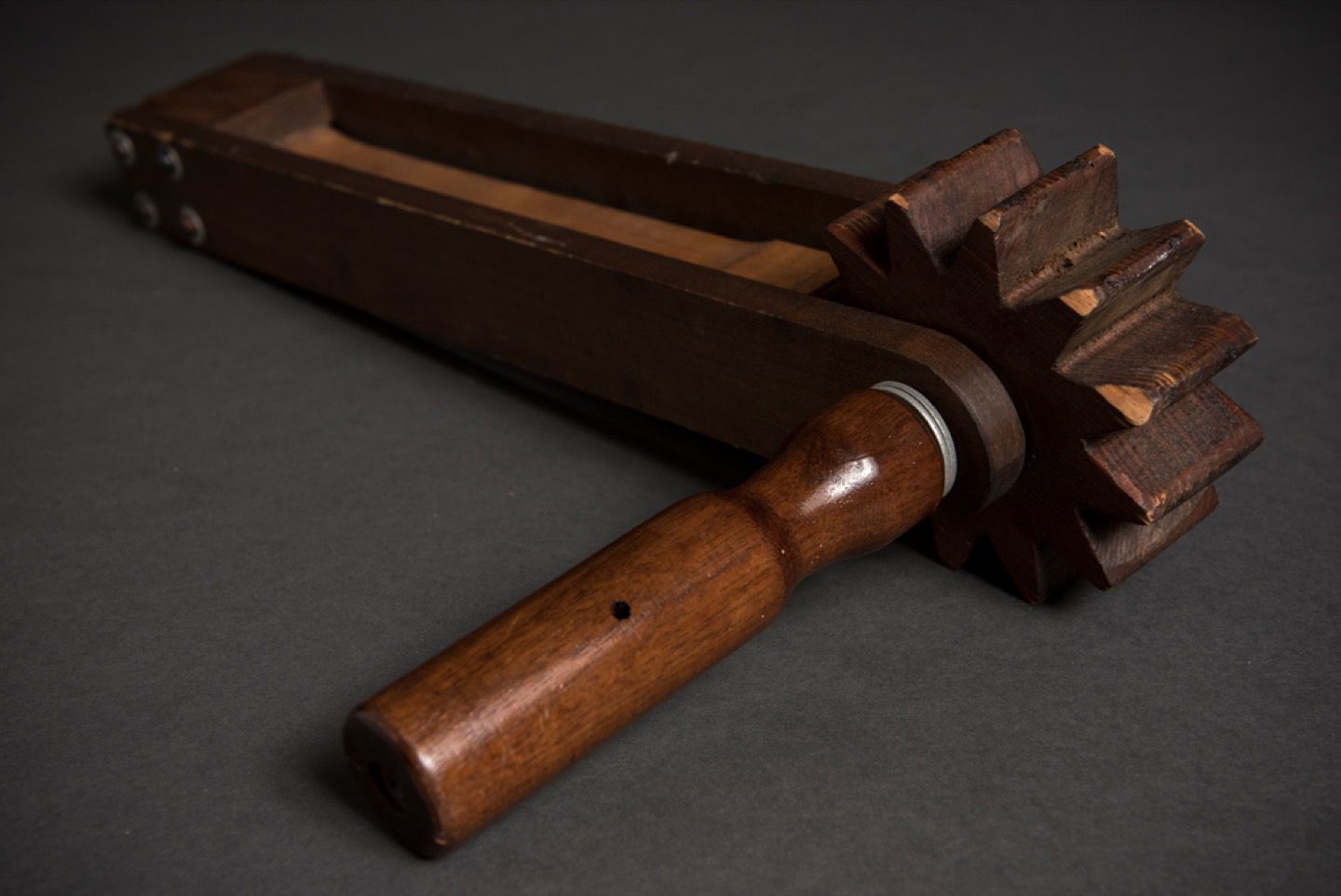Sacred Objects
The Liturgy and Life Collection—materials that document the liturgical movement in the American Catholic Church from 1925 to the mid 1960s—includes religious artifacts in a myriad of forms. These objects are at the intersection of the sacred and the professional as they work with clergy to perform prescribed holy functions. They also emphasize the practical uses these objects were put to, from directing family members preparing for a sick call from a priest, to fluting the brim of a nun’s wimple. For many devoted Catholic individuals, these materials also served as physical connections to their Catholic faith.
The Ursuline Convent Academy, opened in 1820, was the first Catholic girls’ school in Massachusetts, and was burned down by anti-Catholics in 1834. Elizabeth Williams Hayward, a former student, compiled a collection of papers about the fire; the documents were originally stored in this vellum-covered trunk.

Vellum Trunk
Box 2, Elizabeth Hayward Collection of Ursuline Academy Materials, MS2011-027
The Sisters of the Holy Cross and the Seven Dolours used this iron to crimp the brims of their wimples. This version was later replaced by a more efficient fluting machine designed by Sister M. Cyril.

Geneva Hand Fluter
Box 21, Liturgy and Life Collection, BC2013-017
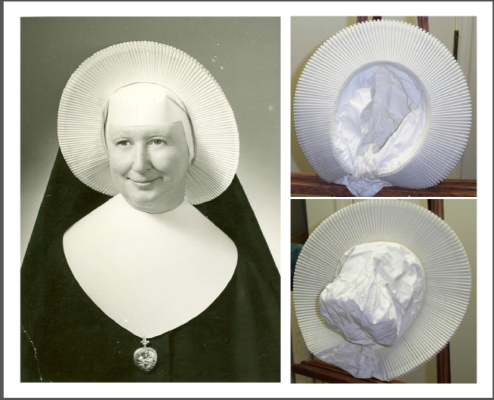
Sisters of Holy Cross fluted wimple
Sisters of the Holy Cross Archives.
Liturgical vestments worn by clergy are meant to both glorify God and denote the office of the person wearing them. The skullcap, or zucchetto, is worn beneath the biretta, and is lined with leather to help it retain its shape. This pre-Vatican II chasuble has more elaborate embroidery on the back, most visible when the priest celebrated Mass while facing the altar. The sweat stains on the edge of this particular mitre are an obvious and humanizing connection to the bishop who once wore it.

Zucchetto
Box 103, Liturgy and Life Collection, BC2013-017

Mitre
Box 103, Liturgy and Life Collection, BC2013-017
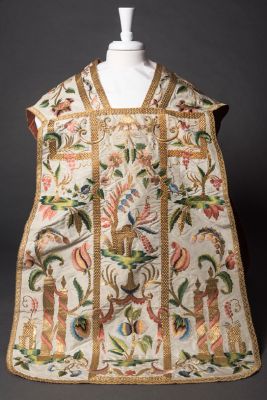
Chasuble, or outer vestment worn by clergy while celebrating mass
Box 272, Liturgy and Life Collection, BC2013-017
Sick call sets, often kept by lay people, are used by priests performing the sacrament of anointing the sick. In addition to the tools the priest needs, this particular set includes directions for how a family member should prepare for the priest’s visit. This clapper’s unassuming appearance belies the racket it can make when spun. Clappers like these were typically used during Holy Week in place of bells during the service.

Sick call set
Box 88, Liturgy and Life Collection, BC2013-017
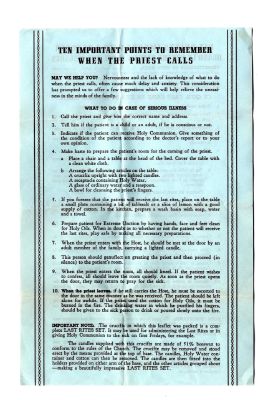
Sick Call Instructions
Box 88, Liturgy and Life Collection, BC2013-017

Clapper
Box 84, Liturgy and Life Collection, BC2013-017

